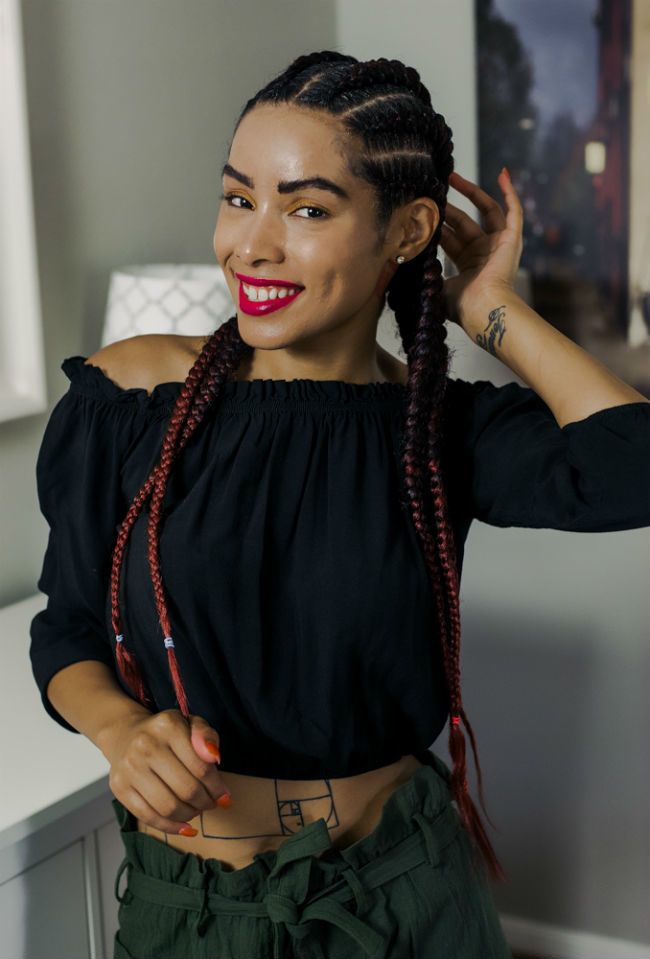
Last September I was on the hunt for a style that could help me give my breakage a break.
Before mustering up the courage to go get a trim and grow out my damaged color-treated hair, I asked my stylist to give me some Ghana braids. They helped my ends blend, grow out to a more comfortable level that allowed me to keep my length when I took them out to get a cut.
So, what are Ghana braids?
Also known as Banana braids, straight-backs, or cornrows, Ghana braids are considered a protective style in the natural/curly hair community. The history goes back to none other than Africa and gained momentum around 500 B.C. According to essayist As Peters for Culturally Situated Design Tools, “Hieroglyphs and sculptures dating back thousands of years illustrate the attention Africans have paid to their hair. Braids were etched into the back of the head of the majestic sphinx.” This hairstyle survived the Middle Passage and made its way to Western civilization.
While the straight-back styles were originally in honor of various religious, kinship, social status, age, and ethnic groups, the more intricate zig-zag, curvier lines attributed to a sort of act of defiance and peaceful protest among slaves–especially when their masters would encourage them to relax or straighten their textured hair. Upon the capture and selling of these people, most were forced to shave their heads as a result.
The first Ghana braids were seen in Hieroglyphs and sculptures
The history of Ghana braids goes back Africa around 500 B.C. in honor of various religious, kinship, social status, age, and ethnic groups. The first Ghana braids were seen in Hieroglyphs and sculptures from that era.
Today in 2018, we are seeing more women of various ethnicities and races rock Ghana braids and cornrows than ever. However, many don’t understand the history behind the iconic style. Ghana braids also transcend a wide array of ages and can be beautifully adorned with hair jewelry like wooden beads, metal rings, or a single flower tucked behind the ear. Most hairstylists start with their client’s natural hair braided from the front/hairline all the way to the back, where additional extension hair can be added for length and thickness. That’s what my stylist did; since I used this as a true protective style, I wanted my ends tucked into some extensions. I also wanted my normally shoulder-length hair to go down past my back for a week.
The necessary scalp upkeep
No combs or other styling tools are necessary while wearing Ghana braids. They pretty much take care of themselves–just wrap hair at night with a satin bonnet to keep the cuticles smooth and shiny longer. One thing I did to get the most out of this protective style was add a root stimulator and a dry shampoo to my regimen (it is not recommended to wash hair with Ghana braids”>. This is what my roots enjoyed:
- DevaCurl No-Poo Quick Cleanser – It absorbs my excess oil and build-up and is botanically-infused to promote scalp health.
- Ruutos Hair Growth Elixir – Coconut, Castor, and Jojoba Oils are the first 3 ingredients listed. It is a soothing treat for my itchy scalp.
- Zenzela Leave-In Conditioner – It contains hydrating aloe and natural clarifying willowbark extract, which I spray my scalp with and gently massage for nourishment and exfoliation.
Watch these helpful Ghana braids tutorials
Have you tried rocked Ghana braids before? Show us on StyleNook or Instagram.
This article was previously published and has been updated to include new imagery.
